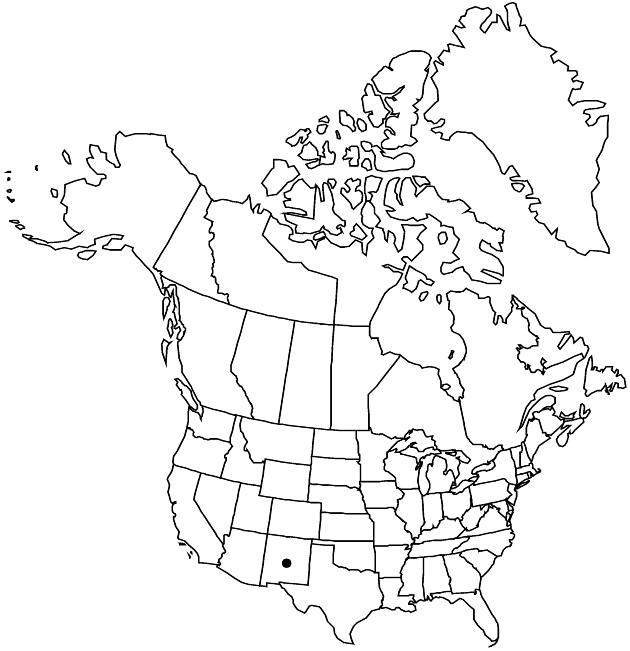Townsendia gypsophila
Brittonia 46: 194, fig. 2. 1994.
Perennials, 2–10 cm (± pulvinate to dendroid). Stems ± erect; inter nodes 0.1–1+ mm, densely piloso-hirsute to hispidulous (surfaces usually hidden by hairs). Leaves basal and cauline, blades ± spatulate or oblanceolate to linear, 4–9 (–25) × 1–2 (–3) mm, ± fleshy, ± strigose. Heads ± sessile. Involucres ± hemispheric to campanulate, 3–6 mm diam. Phyllaries 22–26 in 3–4+ series, the longer ± lanceolate, 3–4 mm (l/w = 2.5–5), apices acute, abaxial faces ± strigillose. Ray-florets (4–) 12–16; corollas white or pinkish adaxially, laminae 3–5+ mm, glabrous abaxially. Disc-florets 40–60; corollas 2.5–3+ mm. Cypselae 2–2.5 mm, faces hairy, hair tips glochidiform; pappi persistent; on ray cypselae 12–15 lance-subulate scales 0.1–0.5 mm; on disc cypselae 12–15+ subulate to setiform scales 2.5–3+ mm.
Phenology: Flowering Apr–Sep.
Habitat: Gypsum outcrops
Elevation: 1600–2100 m
Discussion
Of conservation concern.
Selected References
None.
Lower Taxa
"broader" is not a number.
